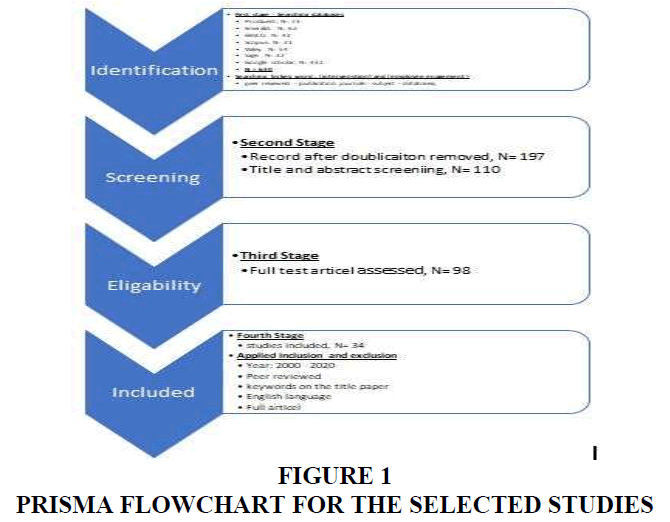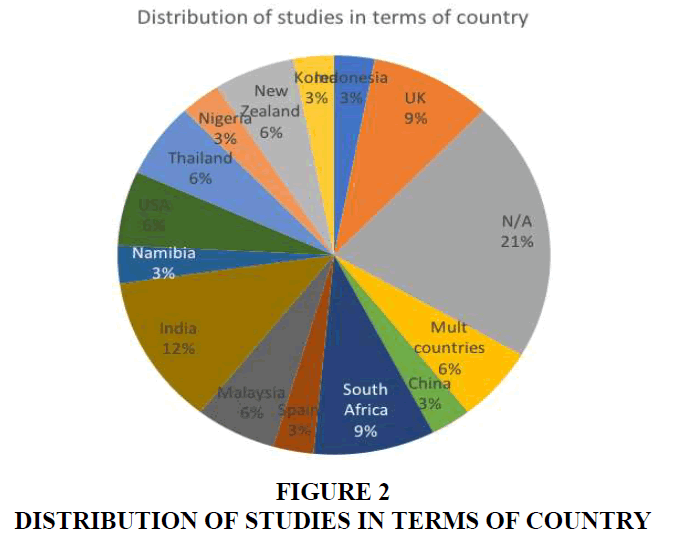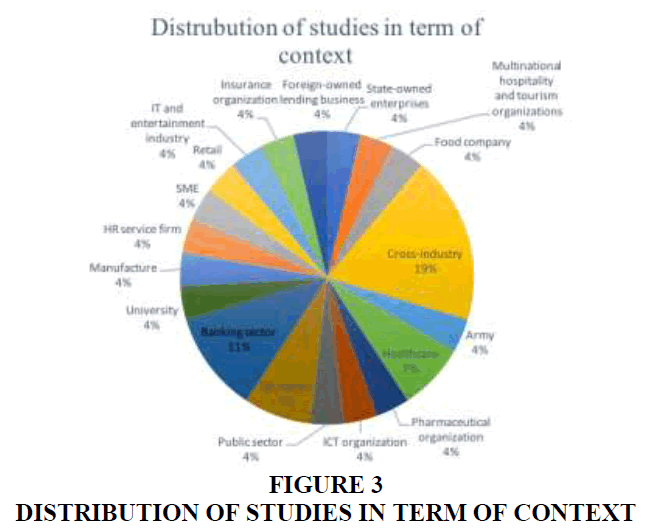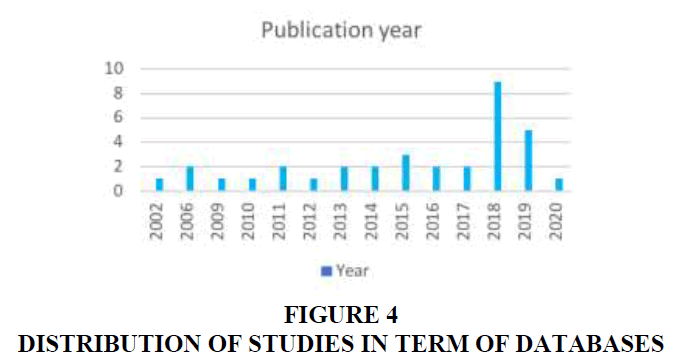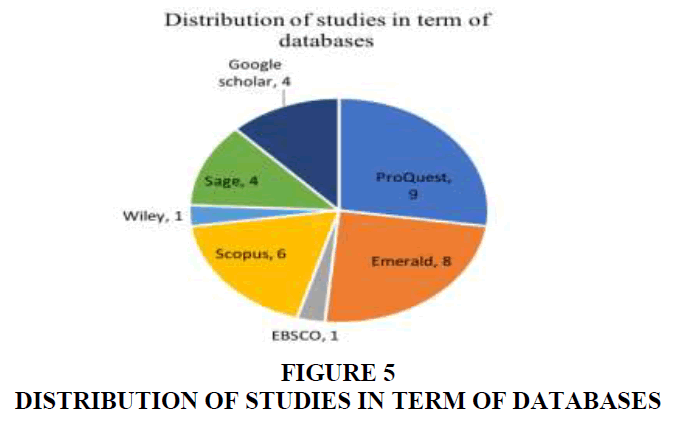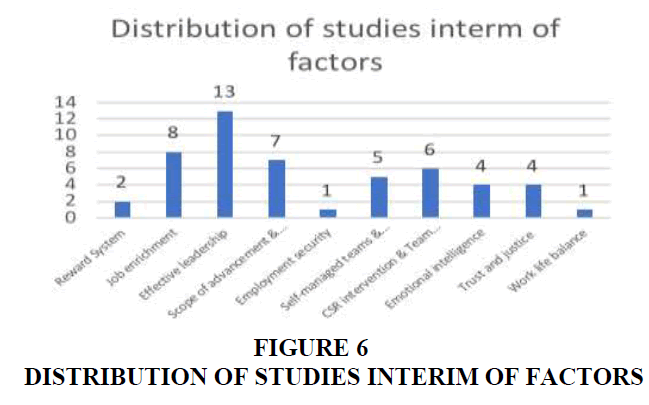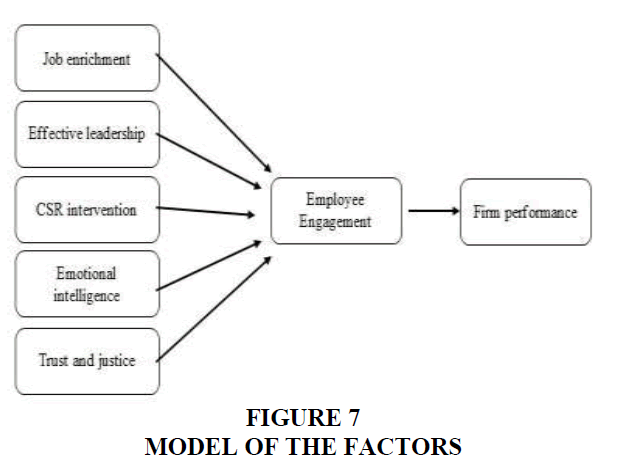Research Article: 2023 Vol: 27 Issue: 2
The Factors Affect the Employee Engagement: A Systematic Review
Muhammad Alshurideh, University of Sharjah
Citation Information: Alshurideh, M. (2023). The Factors Affect the Employee Engagement: A Systematic Review. Journal of Organizational Culture Communications and Conflict, 27(2), 1-13.
Abstract
The main goal of an organization is to make progress and achieve success with time. This goal cannot be attained without staff. This implies that enthusiastic and engaged employees are the key to an organization’s success. The current study aims to identify appropriate HR strategies and factors that promote employee engagement in the organization. For this purpose, the study has put forward a model to reveal the impact of different aspects on employee engagement. Employee engagement with the organization can be enhanced through various aspects including opportunities for personal and career development, effectual leadership, CSR, emotional intelligence, and Trust. Hence, HR department is recommended to consider the mentioned aspects to promote employee engagement.
Keywords
Employee engagement, interventions, firm performance, productivity.
Introduction
Most organizations have acknowledged the importance of Work engagement for employees’ welfare and performance (for instance, Christian et al., 2011; Halbesleben, 2010). This has compelled many organizations to lay primary emphasis on assessment, promotion and maintenance of work engagement. A number of studies have been performed to highlight the factors affecting work engagement as well as their consequences (e.g. Halbesleben, 2010; Crawford et al., 2010). With numerous studies available on the topic, the researchers felt more confident to involve in the formulation and assessment of work engagement interventions (e.g. Maslach & Leiter, 2008). Despite numerous studies available on this topic, there was lack of adequate evidence to serve as the foundation of interventions (Biggs, 2011; Ouweneel et al., 2013). The current study aims to evaluate the employee engagement interventions and to identify the effective ones; this will allow discussing and determining the course of future research. Hence, the affectivity of the controlled work engagement interventions will be evaluated in the systematic review performed in the current study.
Employee Engagement
The idea of employee engagement was initially proposed by Kahn (1990). He put forward the idea that employee engagement results in physical, emotional and mental engagement of employees and their dedication to their jobs. Such employees feel confident and meaningful (because of role performance); they feel safe (such as job security) and experience availability of most physical and mental work-associated resources at their disposal. In this context, Saks (2006) made his contribution and presented a contrast of job engagement with organizational engagement and highlighted the distinct role of employees in both cases. Maslach & Leiter (2008) defined engagement on the basis of burnout and explained the concept of engagement with respect to participation, efficiency and high energy. They described it as being contrary to burnout or exhaustion. They considered engagement as quantifiable and proposed its evaluation with the help of the Maslach Burnout Inventory (Maslach & Jackson, 1981). This idea was not supported by Schaufeli et al. (2002) who held the view that despite being contrary to burnout; it is in no way comparable to burnout and must be seen as independent of burnout. Hence, they proposed that engagement cannot be evaluated in terms of burnout. As per their definition, work engagement is a mindset attributed with vigor, dedication and absorption (Schaufeli et al., 2002).The Utrecht Work Engagement Scale (UWES) was formulated by these experts consequently for the evaluation of engagement. Vigor is defined as the high energy and mental flexibility depicted by the employee during work; dedication means committed and devoted work bringing a feeling of self-confidence and passion; and absorption refers to interest and attention of employees on their work.
Cole et al. (2012) investigated the association between burnout and engagement and rejected the idea of distinction between the two terms suggested by (Schaufeli et al., 2006). They performed a meta-analysis of 50 samples that unfolded significant connection between both concepts. They also revealed that controlled burnout led to significantly lower impact of engagement. They were not certain if burnout and engagement were two different concepts.
Employee Engagement Interventions
Presently, there is no known literature review available in context of work engagement interventions. But, many interventions were found to have been developed since the year 2010 as depicted by initial scoping review1. A majority of these interventions were based on the concept of work engagement proposed by Schaufeli et al. (2002) however; the studies differed with respect to attributes of the participants, research design, and location of organization, study material, time period of study and the sector to which the organization belongs. Some of them evaluated work engagement holistically while some evaluated certain sub-components of this concept. Various work engagement interventions include career resource-building interventions, personal resource-building interventions, health-friendly interventions and leadership training interventions.
Research Questions
Continuous research on the subject of work engagement interventions has yielded mixed outcomes. Hence, it is imperative to present a review to evaluate the interventions that are successful. This review will provide an evident foundation for future research and thus allow the researchers to perform future research more precisely. The main purpose of this study is to present the literature review of the eligible studies (view inclusion criteria) to evaluate controlled work engagement interventions in terms of their efficiency. The systematic literature review can follow the pattern of research performed by (Abu Zayyad et al., 2021; Al-dweeri et al., 2017).
The current study intends to present a review of earlier research done in context of employee engagement and to come up with various aspects related to employee engagement. Moreover, the effect of these interventions in various perspectives and under diverse conditions will be presented in the current study. The 6 key research queries focused by this review are as follows:
RQ1: What areas of study are the included studies related to?
RQ2: Which countries are active with respect to the included studies?
RQ3: How are the studies classified on the basis of their publication year?
RQ4: What research methods have been employed in the included research works?
RQ5: What active databases associated with consumer retention are present in the included studies?
RQ6: Determine the interventions or factors that exercise a significant impact on employee engagement?
Research Important
The present competitive business world has compelled organizations to give preference to their employees. Businesses can only expand when the workforce is satisfied and motivated to better serve the customers leading to satisfied customers. The improvement of employee engagement index has become one of the priorities of the HR managers all over the world. For the accomplishment of this goal, managers invest money and efforts. Through this study, the HR managers become aware of the aspects that lead to better employee engagement. The study enables managers to follow these interventions and redesign their managerial policies accordingly.
Methods
Inclusion and Exclusion Criteria
The inclusion and exclusion criteria set up to help us to do our research. In the inclusion, the search articles must involve in Knowledge Management and Firm Performance. The second should show the relationship between KM and FP. Thirds articles should be between the years of 2010-2020. The fourth should be in English languages. The last point no sector indicator. In the Exclusion criteria, the first articles with Technical background should exclude-second old articles in Knowledge management and firm performance. The last criteria article was written in different languages. The below Table 1 showed the inclusion and exclusion and this research.
| Table 1 Inclusion and Exclusion Criteria | |
| Inclusion Criteria | Exclusion Criteria |
| • Should Involve in Employee Engagement and Firm Performance. • Should be showing the relation between Employee Engagement and Firm Performance, and talk about interventions. • No sector indicators • The year 2000-2020 • Should be written in English |
Articles that doesn’t mention employee engagement intervention clearly. Other language. |
Data Sources and Research Strategies
A systematic literature review method is followed a four-stage review conduct First, identify relevant study as per established search criteria. Second stage is identifying the inclusion and exclusion of articles and study. Third stage is full review of articles and study and finally perform data extraction and analysis. Below Table 2 section is describing each stage in detail.
| Table 2 Data Sources and Databases | |||||
| N | Database | Number of articles | Number of articles | Number of articles | Number of articles |
| Stage 1 | Stage 2 | Stage 3 | Stage 4 | ||
| 1 | ProQuest | 73 | 35 | 16 | 9 |
| 2 | Emerald | 62 | 29 | 12 | 8 |
| 3 | EBSCO | 42 | 35 | 6 | 1 |
| 4 | Scopus | 21 | 11 | 9 | 6 |
| 5 | Wiley | 54 | 23 | 8 | 1 |
| 6 | Sage | 32 | 12 | 9 | 4 |
| 7 | Google scholar | 432 | 52 | 38 | 4 |
| Total | 716 | 197 | 98 | 33 | |
The research terms used “work engagement” and “intervention”, “employee engagement” and “intervention”. PRISMA statement as the research paper has been used.
Based on research question “The factors affect employee engagement”, to identify relevant studies bellow Figure 1 multistage review of articles used. The search result ProQuest 73 articles, Scopus 21, Emerald 62, Wiley 54, Sage 32, Google scholar 432 and ESPCO 42 articles all publish in scholarly journals identified and processed in Mendeley reference manager. In stage 2 all articles set titles reviewed to identify the relevant studies were studies not related to the business context of employee engagement exclude as outcome 110 studies passed to stage 3 where abstract reviewed in terms of how much articles relevant to the main research question. The outcome of this stage is 98 articles which have been reviewed in depth to asset the relevancy and quality in order to build Nobel contribution.
Data Coding and Analysis
To find the right synthesizes the result among all studies selected many aspects of categorizing the studies, in spared sheet such as study methodology (case study, qualitative approach, and quantitative approach), publication Journals, and level of analysis, key finding and future research suggestion. A coding scheme used to analyze the selected factor frequency as bellow frequency appendix Table A1, drivers to employee engagement.
Each selected article has its own factors related to employee engagement as an intervention. The below appendix Table A1 is illustrating the different type of interventions which have been covered in the reviewed articles. Some of those interventions are unknown in the HR field. And some are unique such as storytelling intervention (Gustomo et al., 2019) and sense of calling (Cao et al., 2019).
Results and Discussion
Distribution of the Studies in Terms of Counties
The majority of these studies were carried out in India with 4 studies. Then, 3 studies were carried out in UK. Then followed by 2 studies from South Africa, USA and Malaysia, and New Zealand. Form different other countries, one study at least was analyzed in this study. Figure 2 describes the distribution of all conducted articles across the countries in which these research studies were investigated.
Distribution of the Studies in Terms of Context
Context/discipline is a study field, sector, or industry that is researched in employee engagement. In this research, the collected articles were distributed across the disciplines/contexts. Banking sector is the most contexts that attract most studies to investigate employee engagement and factors that influence it. According to 34 studies that were conducted in this research, about 3 studies were focusing in banking sector. The second most attractable context is healthcare sector 2 studies form conducted studies examined employee engagement with other factors in this field. While the less investigated filed are hotel or hospitality industry, ICT, and retail. Which is recommended for more exploration? Figure 3 represents the distribution of the entire collected articles across the context/discipline that these studies were conducted.
Distribution of Studies in Term of Publication Year
Review all previous literatures shows the growth in studies. As below Figure 4 shows the dramatic growth in literature 2000-2019. Start focusing on employee engagement and interventions. Also this review shows the lack of study’s in venues of values of employee engagement and what the most important interventions to enhance employee engagement are. This systematic review focuses in two mains theoretical background first, established recourses view theory, secondly dynamic capabilities view both of these theories represent as solid foundation of this study trying to evaluate and identify the importance of each factor in employee engagement and firm performance.
Distribution of Studies in Term of Databases
This study was searching for employee engagement and other variable in 7 main database which were Taylor, ProQuest, Emerald, & ScienceDirect, in addition to search on google scholar engine. The majority of the conducted studies were selected form google scholar as shown in Figure 5 with about 20 studies, as it is the most productive among others, followed by emerald database with 4 studies and 2 studies from ProQuest, ScienceDirect, and Taylor databases.
Distribution of Studies in terms of Factors
The main purpose of this review study is to systematically review and analyzed the studies published on employee engagement topic and investigates the factors that could affect it Figure 6. Below appendix Table A1 shows the classification of identified factors basically the independent variable that have relationship with employee engagement across 34 conducted studies. Table A1 in appendix illustrate the distribution of studies in terms of factors identified seven types of intervention job enrichment, effective leadership interventions, scope of advancement and self-development, self-managed teams and decision making authority, CSR intervention and team building activity, emotional intelligence and trust and justice. Below Figure 7 is the proposed model to define the relationship between employees’ engagement and firm performance along with the defined factors.
Job enrichment is a strategy adopted by managers whereby the workers’ job is redesigned and it is made more interesting and challenging with the aim to boost employee productivity and preventing them from monotonous work (Frederick Herzberg, 1986). Job enrichment benefits both the employee and the organization by enabling the organization to accomplish more productivity besides enhancing employee motivation and enthusiasm by offering them opportunities to perform difficult and intricate tasks. Consequently, the organization can reap the benefits of less absenteeism, employee motivation, and engagement and retention of skilled workers (Hackman, 1975).
Carasco-Saul, Kim, as well as Kim (in press) affirmed that the goal of employee engagement can be accomplished through transformational leadership since such leaders are focused on enhancement of followers’ attitude. These leaders enhance employee positivity, their accountability, their significance and worth and encourage their followers to depict improvement in their behavior. Moreover, authentic, appealing and cultural leadership styles of these leaders ensure the benefits of more explanation of responsibilities, better work environment, greater authority and a sense of ownership, leading to greater employee engagement.
Rothmann & Rothmann (2010) identified various factors that have a favorable impact on employee engagement. These factors are constructive work environment in the organization, productive connection of employees with managers, employee involvement in decision-making and explanation of responsibilities. Specifically, the involvement of employees in decisionmaking leads to employee satisfaction which motivates them to be more dedicated to their work as affirmed by Driscoll (1978).
Corporate Social Responsibility (CSR) brings a number of benefits for an organization. The benefits associated with employees are related to their hiring, retention, efficiency, and confidence (Hejjas et al., 2019). This systematic review however, lays special emphasis on how employee engagement is affected by CSR. Since Corporate Social Responsibility (CSR) affects brand reputation, optimistic reviews and recurrent purchasing, it holds a significant place in banking sector (Alshuraideh, 2020).
Conclusion
The concept of Employee engagement has been gaining widespread popularity recently. Organizations are seeking new and innovative methods for retention of skilled and expert employees. Moreover, employee engagement has become crucial due to the increasing competition in the business world presently. Besides organizations, employee engagement offers advantages to employees. The work engagement may be promoted through various interventions as affirmed by the current study. The study presents the model based on main factors promoting employee engagement; the expected outcomes of these factors are also presented.
Further studies can be done on these factors to prove its reliability, validity and practical implications. Moreover, the study suggests the benefit of working in groups for increasing resources, work engagement and well-being. Developing HR interventions could therefore be an effective way of taking work engagement intervention research forward. It is hoped that the results of this study work engagement interventions will stimulate discussion amongst academics and practitioners and help to inform the direction of future research and practice aimed at building and sustaining work engagement (Direction, 2015).
Finally, the limitations of this systematic investigation are as follows. It has mainly focused on the following database for collecting articles (Sage, Wiley, Scopus Ebsco, Emerald, ProQuest and Google scholar). It may not represent all of the studies and the entire database. In further to that the research was directly focused on the articles titled with “Employee Engagement” and “interventions”. This study can be expanded by expanding the search for items by abstract.
Appendix
| Table A1 Independent Factors | |||||||||||
| Independent factors | |||||||||||
| Source | Reward System | Job enrichment | Effective leadership | Scope of advancement & self-development | Employment security | Self-managed teams & decision making authority | CSR intervention & Team building activity | Emotional intelligence | Trust and justice | Work life balance | |
| 1 | (Gustomo et al., 2019) | x | |||||||||
| 2 | (Hejjas et al., 2019) | x | |||||||||
| 3 | (Bakker, 2011) | x | |||||||||
| 4 | (Saks, 2019) | x | x | x | x | x | |||||
| 5 | (Xanthopoulou et al., 2009) | x | |||||||||
| 6 | (Hobfoll, 2002) | x | |||||||||
| 7 | (Bakker et al., 2006) | x | |||||||||
| 8 | (Cao et al., 2019) | x | |||||||||
| 9 | (Meintjes & Hofmeyr, 2018) | x | x | x | x | ||||||
| 10 | (Seymour & Geldenhuys, 2018) | x | |||||||||
| 11 | (Extremera et al., 2018) | x | |||||||||
| 12 | (Hee et al., 2018) | x | |||||||||
| 13 | (Mahajan & Sharma, 2015) | x | |||||||||
| 14 | (Pieters, 2018) | x | |||||||||
| 15 | (Singh, 2016) | x | x | ||||||||
| 16 | (Soni & Mehta, 2018) | x | |||||||||
| 17 | (Valentin et al., 2015) | x | |||||||||
| 18 | (Biddison et al., 2016) | x | x | ||||||||
| 19 | (Tomlinson, 2010) | x | |||||||||
| 20 | (Khewsomboon, 2017) | x | x | x | x | ||||||
| 21 | (Yeo & Carter, 2018) | x | |||||||||
| 22 | (Ugwu et al., 2014) | x | x | ||||||||
| 23 | (Thomas, 2020) | x | |||||||||
| 24 | (Bandura & Lyons, 2017) | x | x | x | x | ||||||
| 25 | (Potdar et al., 2018) | x | |||||||||
| 26 | (Martins & Nienaber, 2018) | x | |||||||||
| 27 | (Chaurasia & Shukla, 2013) | x | |||||||||
| 28 | (Palmer & Gignac, 2012) | x | |||||||||
| 29 | (Conant, 2015) | x | |||||||||
| 30 | (Song et al., 2014) | x | x | x | |||||||
| 31 | (Xu & Thomas, 2011) | x | |||||||||
| 32 | (Mazzei et al., 2019) | x | |||||||||
| 33 | (Tonvongval, 2013) | x | |||||||||
| Total | 2 | 8 | 13 | 7 | 1 | 5 | 6 | 4 | 4 | 1 | |
References
Abu Zayyad, H.M., Obeidat, Z.M., Alshurideh, M.T., Abuhashesh, M., Maqableh, M., & Masa’deh, R.E. (2021). Corporate social responsibility and patronage intentions: The mediating effect of brand credibility. Journal of Marketing Communications, 27(5), 510-533.
Indexed at, Google Scholar, Cross Ref
Al-dweeri, R.M., Obeidat, Z.M., Al-dwiry, M.A., Alshurideh, M.T., & Alhorani, A.M. (2017). The impact of e-service quality and e-loyalty on online shopping: moderating effect of e-satisfaction and e-trust. International Journal of Marketing Studies, 9(2), 92-103.
Bakker, A.B. (2011). An evidence-based model of work engagement. Current Directions in Psychological Science, 20(4), 265-269.
Indexed at, Google Scholar, Cross Ref
Bakker, A.B., Emmerik, H.V., & Euwema, M.C. (2006). Crossover of burnout and engagement in work teams. Work and Occupations, 33(4), 464-489.
Indexed at, Google Scholar, Cross Ref
Bandura, R.P., & Lyons, P.R. (2017). Using a skill-building tool to enhance employee engagement. Human Resource Management International Digest.
Indexed at, Google Scholar, Cross Ref
Biddison, E.L.D., Paine, L., Murakami, P., Herzke, C., & Weaver, S.J. (2016). Associations between safety culture and employee engagement over time: a retrospective analysis. BMJ Quality & Safety, 25(1), 31-37.
Indexed at, Google Scholar, Cross Ref
Biggs, A.J. (2011). A longitudinal evaluation of strain, work engagement, and intervention strategies to address the health of high-risk employees(Vol. 12, No. 6). Brisbane: Griffith University.
Indexed at, Google Scholar, Cross Ref
Cao, Y., Liu, J., Liu, K., Yang, M., & Liu, Y. (2019). The mediating role of organizational commitment between calling and work engagement of nurses: A cross-sectional study. International Journal of Nursing Sciences, 6(3), 309-314.
Indexed at, Google Scholar, Cross Ref
Chaurasia, S., & Shukla, A. (2013). The influence of leader-member exchange relations on employee engagement and work role performance. International Journal of Organization Theory & Behavior.
Indexed at, Google Scholar, Cross Ref
Christian, M.S., Garza, A.S., & Slaughter, J.E. (2011). Work engagement: A quantitative review and test of its relations with task and contextual performance. Personnel Psychology, 64(1), 89-136.
Indexed at, Google Scholar, Cross Ref
Direction, S. (2015). Increasing Employee Engagement: The Role of Interpersonal Leadership'. Strategic Direction, 31(2), 34.
Indexed at, Google Scholar, Cross Ref
Extremera, N., Mérida-López, S., Sánchez-Álvarez, N., & Quintana-Orts, C. (2018). How does emotional intelligence make one feel better at work? The mediational role of work engagement. International Journal of Environmental Research and Public Health, 15(9), 1909.
Indexed at, Google Scholar, Cross Ref
Gustomo, A., Febriansyah, H., Ginting, H., & Santoso, I.M. (2019). Understanding narrative effects: The impact of direct storytelling intervention on increasing employee engagement among the employees of state-owned enterprise in West Java, Indonesia. Journal of Workplace Learning, 31(2), 166-191.
Indexed at, Google Scholar, Cross Ref
Halbesleben, J.R. (2010). A meta-analysis of work engagement: Relationships with burnout, demands, resources, and consequences. Work Engagement: A Handbook of Essential Theory and Research, 8(1), 102-117.
Hee, O.C., Ibrahim, R., Kowang, T.O., & Fei, G.C. (2018). Employee engagement as a mediator between transformational leadership and employee performance. Asian Journal of Scientific Research, 11(3), 441-448.
Hejjas, K., Miller, G., & Scarles, C. (2019). “It’s like hating puppies!” Employee disengagement and corporate social responsibility. Journal of Business Ethics, 157, 319-337.
Hobfoll, S.E. (2002). Social and psychological resources and adaptation. Review of General Psychology, 6(4), 307-324.
Kahn, W.A. (1990). Psychological conditions of personal engagement and disengagement at work. Academy of Management Journal, 33(4), 692-724.
Indexed at, Google Scholar, Cross Ref
Khewsomboon, W. (2017). Utilizing organization development interventions (ODI) on organizational culture of collectivism to enhance employee engagement: The case study of a human resources service company based in Bangkok, Thailand. Organization Development Journal, 35(4), 61-80.
Mahajan, S., & Sharma, R. (2015). Impact of effective leadership on employee engagement. International Journal of Education and Management Studies, 5(4), 288.
Martins, N., & Nienaber, H. (2018). The influence of time on employee engagement in the SA business environment. International Journal of Productivity and Performance Management, 67(9), 1682-1702.
Indexed at, Google Scholar, Cross Ref
Maslach, C., & Jackson, S.E. (1981). The measurement of experienced burnout. Journal of organizational behavior, 2(2), 99-113.
Indexed at, Google Scholar, Cross Ref
Maslach, C., & Leiter, M.P. (2008). The truth about burnout: How organizations cause personal stress and what to do about it. John Wiley & Sons.
Mazzei, A., Butera, A., & Quaratino, L. (2019). Employee communication for engaging workplaces. Journal of Business Strategy, 40(6), 23-32.
Indexed at, Google Scholar, Cross Ref
Meintjes, A., & Hofmeyr, K. (2018). The impact of resilience and perceived organisational support on employee engagement in a competitive sales environment. SA Journal of Human Resource Management, 16(1), 1-11.
Palmer, B.R., & Gignac, G. (2012). The impact of emotionally intelligent leadership on talent retention, discretionary effort and employment brand. Industrial and Commercial Training.
Indexed at, Google Scholar, Cross Ref
Pieters, W.R. (2018). Assessing organisational justice as a predictor of job satisfaction and employee engagement in Windhoek. SA Journal of Human Resource Management, 16(1), 1-11.
Potdar, B., Guthrie, J., Gnoth, J., & Garry, T. (2018). Yours ethically: The role of corporate social responsibility and employee engagement in shoplifting prevention. International Journal of Retail & Distribution Management.
Indexed at, Google Scholar, Cross Ref
Saks, A.M. (2006). Antecedents and consequences of employee engagement. Journal of Managerial Psychology, 21(7), 600-619.
Saks, A.M. (2019). Antecedents and consequences of employee engagement revisited. Journal of Organizational Effectiveness: People and Performance, 6(1), 19-38.
Indexed at, Google Scholar, Cross Ref
Schaufeli, W.B., Bakker, A.B., & Salanova, M. (2006). The measurement of work engagement with a short questionnaire: A cross-national study. Educational and Psychological Measurement, 66(4), 701-716.
Indexed at, Google Scholar, Cross Ref
Schaufeli, W.B., Salanova, M., González-Romá, V., & Bakker, A.B. (2002). The measurement of engagement and burnout: A two sample confirmatory factor analytic approach. Journal of Happiness studies, 3, 71-92.
Seymour, M.A., & Geldenhuys, D.J. (2018). The impact of team dialogue sessions on employee engagement in an information and communication technology company. SA Journal of Human Resource Management, 16(1), 1-11.
Singh, R. (2016). The impact of intrinsic and extrinsic motivators on employee engagement in information organizations. Journal of Education for Library and Information Science, 57(2), 197-206.
Indexed at, Google Scholar, Cross Ref
Soni, D., & Mehta, P. (2018). Employee Engagement in Corporate Social Responsibility (CSR): Reflection from Indian Banking Sector. Journal of Strategic Human Resource Management, 7(2), 40-47.
Thomas, R. (2020). Formal organizational initiatives and its impact on employee engagement. In International Journal of Psychosocial Rehabilitation, 24(3), 2336–2344.
Tomlinson, G. (2010). Building a culture of high employee engagement. Strategic HR review, 9(3), 25-31.
Indexed at, Google Scholar, Cross Ref
Tonvongval, S. (2013). Impact Of Transformational Leadership Development Through Organization Development Intervention On Employee Engagement And Firm Performance: A Case St. Social Research Reports, 5(25), 34-49.
Ugwu, F.O., Onyishi, I.E., & Rodríguez-Sánchez, A.M. (2014). Linking organizational trust with employee engagement: The role of psychological empowerment. Personnel Review.
Indexed at, Google Scholar, Cross Ref
Valentin, M.A., Valentin, C.C., & Nafukho, F.M. (2015). The engagement continuum model using corporate social responsibility as an intervention for sustained employee engagement: Research leading practice. European Journal of Training and Development.
Indexed at, Google Scholar, Cross Ref
Xanthopoulou, D., Bakker, A.B., Demerouti, E., & Schaufeli, W.B. (2009). Work engagement and financial returns: A diary study on the role of job and personal resources. Journal of Occupational and Organizational Psychology, 82(1), 183-200.
Indexed at, Google Scholar, Cross Ref
Xu, J., & Thomas, H.C. (2011). How can leaders achieve high employee engagement?. Leadership & Organization Development Journal, 32(4), 399-416.
Yeo, A.C.M., & Carter, S. (2018). Corporate Social Responsibility Intervention: A Catalyst To Small-Medium Enterprise Employee Engagement. Psychosociological Issues in Human Resource Management, 6(1).
Received: 04-Mar-2023, Manuscript No. JOCCC-23-13416; Editor assigned: 06-Mar-2023, Pre QC No. JOCCC-23-13416(PQ); Reviewed: 20-Mar-2023, QC No. JOCCC-23-13416; Revised: 27-Mar-2023, Manuscript No. JOCCC-23-13416(R); Published: 31-Mar-2023
